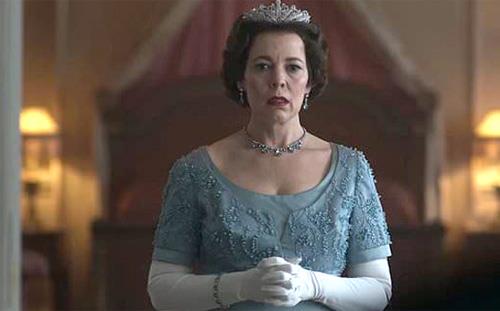
By the time Queen Elizabeth had been ruling Britain for a decade, it's safe to say she had banished any tiny vestiges of spontaneity, impulse, or fun from her public behavior.
With Season 3 of the acclaimed series The Crown, which premieres Sunday on Netflix, we see the Elizabeth most of us have known all our lives: totally controlled and entirely focused on presenting a demeanor of reassuring concern and benevolence.
It should be stressed that she was not alone in regarding her calm, assured face as the most important part of her job in an age when the throne had long since lost any actual power.
Seasons 1 and 2 of The Crown, in which Claire Foy played the young Elizabeth as she ascended to the throne and then wrestled with its responsibilities, offered periodic glimpses behind the mask. Foy's Elizabeth felt frustration and ruminated about the cage, albeit a well-appointed cage, in which fate and history had placed her.
Season 3, in which Olivia Colman takes over the role, begins in 1964, 11 years after Elizabeth's coronation. In its early episodes, at least, Elizabeth has settled firmly into the "acceptance" stage.
She deals with what is in a manner that has become increasingly efficient and traditional.
To put it bluntly, she has become the unapologetically bland queen who still reigns today, 66 years later.
Colman, then, faces the challenge of how to make bland interesting.
Happily, she has the skills to do it. The question is whether the writers will give her the material since subtle gestures and expressions can only take her so far.
She does get solid help from Tobias Menzies, who takes over as Elizabeth's husband, Prince Philip, and Helena Bonham Carter, who plays Elizabeth's younger and livelier sister Princess Margaret.
Still, The Crown's dilemma is reflected in the new season's first two episodes, which take markedly different tones.
As fans of previous seasons know, each episode of The Crown takes a real-life historical event or situation and dramatizes it. The writers imagine dialogue, of course, and in some episodes enhance dynamics that make for better television.
The first episode of Season 3 primarily focuses on a Cold War spy scandal, wherein the royal art curator was found to have been slipping state secrets to the Soviet Union.
The resolution of that discovery took a startling twist in real life, and The Crown follows that path. The problem for American audiences is that while this case sent shock waves through Britain, several factors muted its impact on this side of the pond.
A dramatized recounting of the case, therefore, feels less than riveting, since Elizabeth herself does not bring any added electricity to the tale.
As if tacitly acknowledging this rather mild opener, the writers go the other way with the second episode.
Bonham Carter's Margaret, only an incidental and not very promising presence in the first episode, bursts forth in the second when a reluctant Elizabeth enlists her in a diplomatic mission.
Here again, the story has factual roots. The presentation, including Bonham Carter's indelible performance, has "amped up for TV" stamped all over it.
The tone of The Crown still has an authentic ring as Season 3 begins, and Colman makes viewers feel confident they see who Elizabeth had become.
But if anyone doubted after Season 2 that The Crown is first of all a TV show, that doubt has evaporated as surely as any lingering twinkle in Elizabeth's eye.